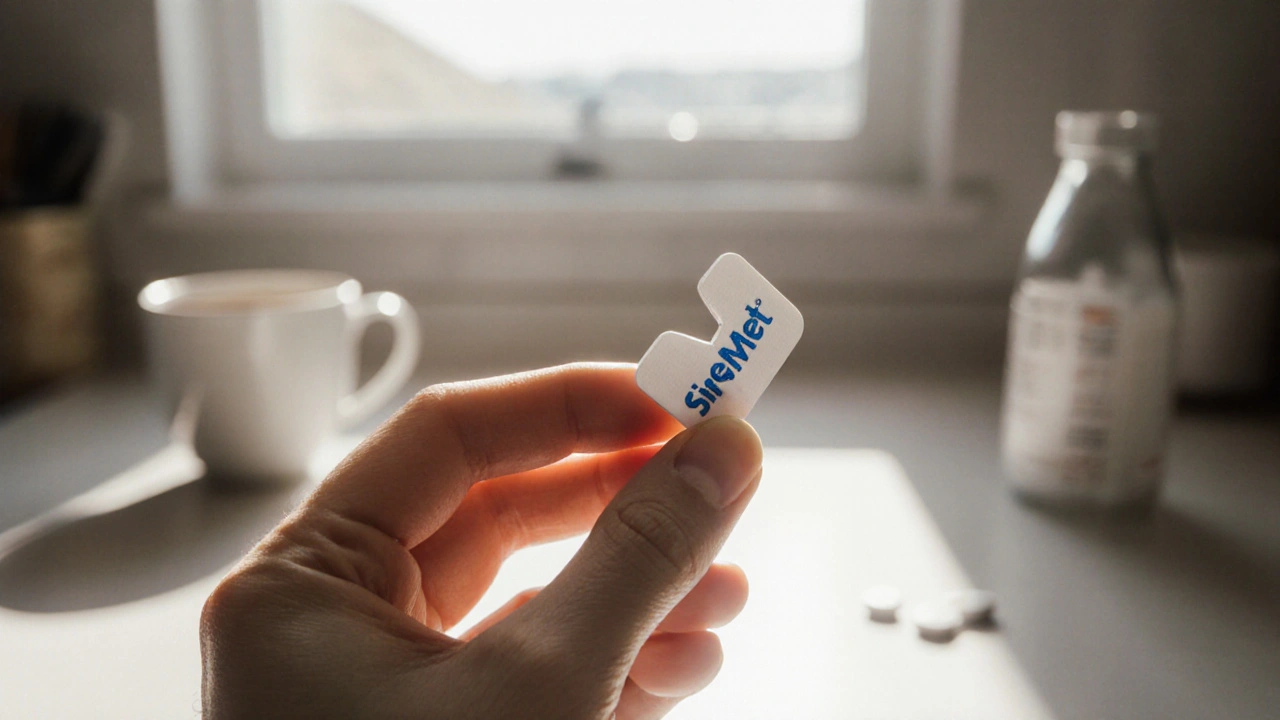Sinemet vs Alternatives: Which Parkinson’s Drug Is Right for You?

Parkinson's Medication Decision Guide
Find Your Best Medication Match
Answer a few questions about your symptoms, side effects, lifestyle, and budget to get personalized recommendations for Parkinson's medications that may work best for you.
1. What are your main symptoms?
2. Which side effects are most concerning to you?
3. What's your preferred dosing schedule?
4. What's your budget range (CAD/month)?
When it comes to managing Parkinson’s disease, the choice of medication can feel overwhelming. Sinemet alternatives are a hot topic because many patients wonder if the classic carbidopa‑levodopa combo is still the best fit or if newer options might offer smoother symptom control, fewer side effects, or better convenience. This guide walks you through what Sinemet is, how it stacks up against the most common alternatives, and which factors should steer your decision.
Key Takeaways
- Sinemet (carbidopa + levodopa) remains the gold‑standard for motor symptom relief but can cause wearing‑off and dyskinesia.
- Extended‑release forms like Rytary and combination pills such as Stalevo improve dosing flexibility.
- Non‑levodopa agents (rotigotine patch, pramipexole, apomorphine) are useful for early PD or when levodopa side effects become problematic.
- Cost, insurance coverage, and personal lifestyle (e.g., pill burden, meal timing) heavily influence the best choice.
- Regular monitoring and open dialogue with your neurologist are essential no matter which drug you start.
What Is Sinemet?
Sinemet is a fixed‑dose tablet that combines two active ingredients: Carbidopa a peripheral dopa‑decarboxylase inhibitor that prevents levodopa from converting to dopamine outside the brain, reducing nausea and vomiting. and Levodopa the direct precursor to dopamine that crosses the blood‑brain barrier and is then converted into dopamine in the striatum.
The combination allows a lower dose of levodopa to achieve the same symptom control while minimizing peripheral side effects. Sinemet is available in immediate‑release (IR) tablets (usually 25/100 mg of carbidopa/levodopa) and is often the first prescription after a Parkinson’s diagnosis.

How Sinemet Works
Levodopa replenishes the dwindling dopamine stores that cause tremor, stiffness, and slowed movement. Carbidopa stays largely out of the brain, blocking the enzyme aromatic L‑amino‑acid decarboxylase in the gut and peripheral tissues. This dual action means more levodopa reaches the central nervous system and patients experience fewer gastrointestinal complaints.
However, long‑term use can lead to “wearing‑off” (sessions where the dose no longer covers symptom gaps) and dyskinesias (involuntary movements) because the brain’s ability to store dopamine diminishes over time.
Top Alternatives to Sinemet
Below are the most frequently considered substitutes, each with its own mechanism and usage profile.
- Stalevo a triple‑combination pill that adds entacapone, a COMT inhibitor, to carbidopa/levodopa, extending levodopa’s half‑life and smoothing out motor fluctuations.
- Rytary an extended‑release formulation of carbidopa/levodopa that provides more consistent plasma levels, reducing dosing frequency for many patients.
- Rotigotine a transdermal patch delivering a dopamine agonist continuously over 24 hours, handy for patients who have trouble swallowing pills.
- Pramipexole an oral dopamine agonist that can be started early in the disease course to delay levodopa initiation.
- Apomorphine a fast‑acting injectable or sublingual dopamine agonist used for breakthrough “off” episodes.
- Deep Brain Stimulation (DBS) a surgical option that delivers electric pulses to the subthalamic nucleus or globus pallidus, reducing medication needs.
Side‑Effect Profiles at a Glance
Understanding the typical adverse effects helps you weigh each option against your lifestyle and health history.
| Medication | Mechanism | Typical Dosing Frequency | Key Side Effects | Average Monthly Cost (CAD) |
|---|---|---|---|---|
| Sinemet | Carbidopa+Levodopa (IR) | 3-4 times daily | Nausea, orthostatic hypotension, wearing‑off, dyskinesia | $30‑$60 |
| Stalevo | Carbidopa+Levodopa+Entacapone | 3-4 times daily (often less “off” time) | Diarrhea, urine discoloration, same levodopa issues | $120‑$150 |
| Rytary | Extended‑release Carbidopa+Levodopa | 2-3 times daily | Dry mouth, constipation, dyskinesia (dose‑related) | $200‑$250 |
| Rotigotine | Dopamine agonist (patch) | Once daily patch | Skin irritation, hallucinations, impulse control issues | $180‑$220 |
| Pramipexole | Dopamine agonist (oral) | 2-3 times daily | Somnolence, edema, compulsive behaviors | $90‑$130 |
| Deep Brain Stimulation | Electrical modulation of basal ganglia | Implanted device; medication adjusted | Surgical infection, hardware malfunction, mood changes | Initial $30,000‑$45,000 (one‑time) + follow‑up |

Choosing the Right Option for You
There’s no one‑size‑fits‑all answer, but consider these three decision pillars:
- Symptom pattern. If you experience rapid “off” periods after the first few years of Sinemet, an extended‑release form (Rytary) or a COMT inhibitor (Stalevo) can smooth peaks and troughs.
- Side‑effect tolerance. Patients prone to nausea may benefit from the carbidopa component, but those who develop troublesome dyskinesias might switch to a dopamine agonist or add amantadine for mitigation.
- Lifestyle and cost. A once‑daily patch (Rotigotine) fits a busy schedule, while surgical DBS suits those with severe motor fluctuations despite optimized meds.
Discuss these points with your neurologist. Bring a medication diary (timing, symptom scores, side effects) to the appointment - it makes the conversation concrete and helps the clinician fine‑tune the regimen.
Practical Tips for Managing Any Parkinson’s Regimen
- Take levodopa‑based drugs on an empty stomach (usually 30minutes before food) to maximize absorption.
- Keep a consistent dosing schedule; even small timing shifts can trigger “off” episodes.
- If you notice increased dyskinesia, ask about dose reduction or adding a “dose‑sparing” agent like a COMT inhibitor.
- Monitor blood pressure; carbidopa can cause orthostatic drops, especially when you stand quickly.
- Watch for impulse‑control disorders (gambling, shopping) when using dopamine agonists - report any changes early.
Frequently Asked Questions
Is Sinemet still the best first‑line treatment?
For most newly diagnosed patients, the carbidopa‑levodopa combo is the most predictable way to restore dopamine and improve daily function. Newer agents are usually added later when motor fluctuations or side effects emerge.
When should I consider switching to Stalevo?
If you find that the effect of your Sinemet dose wears off before the next scheduled tablet-often called “wearing‑off”-adding entacapone (Stalevo) can prolong levodopa’s action without increasing the levodopa dose.
Are dopamine agonists safer than levodopa?
Agonists cause fewer dyskinesias early on, but they carry higher risks of sleepiness, hallucinations, and impulse‑control problems. The choice depends on age, disease stage, and personal risk tolerance.
Can a patch like Rotigotine replace my tablets?
Rotigotine can be used alone in early‑stage patients or combined with a low dose of levodopa later. It’s especially handy if swallowing pills is difficult, but skin irritation is a common complaint.
Is Deep Brain Stimulation a cure?
DBS isn’t a cure; it reshapes the electrical activity of brain circuits that drive tremor and rigidity. It can dramatically lower medication needs and improve quality of life, but careful candidate selection and postoperative programming are vital.
Michael Barrett
October 12, 2025 AT 19:34When we examine the pharmacodynamics of levodopa, we must first acknowledge its central role in dopamine replenishment; yet the peripheral metabolism cannot be ignored, leading to the famous carbidopa adjunct. The interplay between the blood‑brain barrier and enzymatic inhibition creates a delicate equilibrium-one that patients often describe as a tightrope walk, occasionally wobbling, occasionally steady. Moreover, the concept of "wearing‑off" is not merely a clinical term, it is a lived experience, a rhythm disruption that can be quantified yet feels subjective. Some clinicians argue that extended‑release formulations merely shift the problem temporally, rather than solving it, but evidence suggests a reduction in dosing frequency can improve adherence. It is also noteworthy that the cost gradient-from thirty dollars to two hundred fifty-poses a socioeconomic stratification, a reality that deserves ethical scrutiny. While the patch delivery of rotigotine offers convenience, transdermal absorption variability adds another layer of complexity; this is often underappreciated in patient counseling. In sum, the therapeutic landscape is a mosaic of pharmacokinetic nuances, patient preferences, and system-level constraints. Therefore, shared decision‑making remains paramount.
Inma Sims
October 15, 2025 AT 03:07Oh, absolutely, because we all love spending our evenings parsing pharmacology textbooks, don’t we? Your exhaustive breakdown is as refreshing as a cold shower in the middle of a marathon, truly. While we appreciate the encyclopedic detail, a concise summary for the layperson might actually be more humane. Nonetheless, your dedication to nuance is, without a doubt, a shining example of over‑engineering a simple medication guide. One might suggest a bullet‑point list; but why keep it simple when we can indulge in verbosity?
Gavin Potenza
October 17, 2025 AT 10:40Alright folks, let’s cut through the jargon and get to the heart of the matter: Sinemet works, but it’s not a one‑size‑fits‑all. In the grand scheme of Parkinson’s therapeutics, you’ve got your carbidopa‑levodopa combos, your patches, and your fancy surgical options-each with its own pros and cons. If you’re early in the disease, a dopamine agonist might delay the need for levodopa, which can be a savvy move. On the flip side, once the motor symptoms start to dominate, you’ll probably end up on some form of levodopa anyway. So, weigh your options, talk to your neurologist, and remember that “best” is personal.
Frank Pennetti
October 19, 2025 AT 18:14The reality, dear colleagues, is that most of these so‑called “alternatives” are just marketing fluff designed to line the pockets of pharmaceutical megacorps, particularly those who dominate the North American market. When you look at the data, the extended‑release variants simply repack the same molecule with a premium price tag-an economic stratagem that benefits the industry, not the patient. Moreover, the patch approach, while touted as innovative, often suffers from variable adhesion and cutaneous reactions, making it a suboptimal choice for the majority. In short, the gold standard remains the generic carbidopa‑levodopa; all else is a costly veneer.
Adam Baxter
October 22, 2025 AT 01:47Stick with the basics and you’ll save money.
Keri Henderson
October 24, 2025 AT 09:20Exactly! Start with the proven therapy, monitor your response, and only consider upgrades if your symptoms demand it-steady progress beats reckless experimentation every time.
elvin casimir
October 26, 2025 AT 16:54Alright, let’s get real about this whole Sinemet debate. First off, the notion that a single drug can magically cure Parkinson’s is pure fantasy-no drug does that, no matter how it’s marketed. The carbidopa‑levodopa combo has been around for decades, and its efficacy is backed by solid clinical trials, not by hype from big pharma. You’ll hear some patients swear by the newer extended‑release formulations, but honestly, they’re just paying extra for a slower release mechanism, which doesn’t change the underlying neurodegeneration. If you’re looking for a “miracle,” you’re better off consulting a neurologist than a supplement guru on the internet. The cost differences are staggering; a generic Sinemet pill can be sourced for under twenty dollars a month, whereas Stalevo or Rytary can easily exceed two hundred, draining your wallet for marginal benefit. Don’t let the glossy ads convince you that expensive equals better-most of the time it’s just a profit‑driven strategy. Also, the patch options like rotigotine have a decent place in therapy, but skin irritation and the need for proper placement make them less practical for many patients. Honestly, if you’re not comfortable managing a patch schedule, stick with oral meds. Some folks argue that dopamine agonists are “safer” early on, but they carry their own baggage: sleep attacks, impulse‑control disorders, and hallucinations, which can be far more disruptive than early dyskinesia. Remember, the goal is to maintain quality of life, not to chase a myth of “no side‑effects.” When you think about it, the US healthcare system loves to push newer, pricier options because they generate revenue, not because they’re clinically superior. That’s why it’s crucial to stay skeptical and demand evidence, not marketing hype. If you’re ever tempted by a flashy new drug, ask yourself if there’s peer‑reviewed data supporting its superiority-most likely the answer is no. Bottom line: start low, stay low, and only add complexity when absolutely necessary. Your brain doesn’t need fancy packaging; it needs consistent dopamine replenishment, period. And as a final note, please double‑check your prescriptions for dosage errors-typos happen, and a simple mix‑up can have serious consequences.
Steve Batancs
October 29, 2025 AT 00:27While I appreciate the thoroughness of the previous analysis, I must point out that some statements regarding the “myth of no side‑effects” oversimplify the nuanced risk‑benefit profile of each therapy. Clinical guidelines recommend individualized treatment plans based on disease stage, comorbidities, and patient preferences, rather than a blanket dismissal of newer agents. Moreover, the cost considerations, though valid, should be balanced against insurance coverage options that may mitigate out‑of‑pocket expenses. Therefore, a prudent approach involves collaborative decision‑making with the treating neurologist, taking into account both clinical efficacy and economic factors.
Ragha Vema
October 31, 2025 AT 08:00Can you believe the secrets they’re keeping from us? The whole “new drug is better” narrative is just a smokescreen, a covert operation by pharma lobbies to keep us dependent! I’m telling you, the moment you start trusting the patch or the fancy combo, you’re signing away your freedom to a corporate overlord. It’s like a dystopian plot – they control the dosage, they control the side‑effects, they control the very rhythm of our lives. Wake up, people! The truth is buried beneath glossy ads and polished press releases, waiting for us to question the status quo. Let’s not be pawns; let’s stay informed and demand transparency.
Scott Mcquain
November 2, 2025 AT 15:34Indeed, it is imperative, from an ethical standpoint, to scrutinize the motivations behind pharmaceutical promotions, for the sanctity of patient autonomy must not be compromised, and the allure of novel therapies should never eclipse the principle of “do no harm.”
kuldeep singh sandhu
November 4, 2025 AT 23:07Actually, I think the whole discussion about cost versus benefit is overblown; many patients find value in newer formulations despite higher price tags.
Nicola Strand
November 7, 2025 AT 06:40While your perspective offers an alternative view, the evidence consistently demonstrates that generic carbidopa‑levodopa provides comparable efficacy with significantly reduced financial burden, thereby challenging the notion that premium products necessarily confer superior clinical outcomes.
Jackie Zheng
November 9, 2025 AT 14:14That’s a solid point, and I’d add that individual responses can vary-some people truly feel better on the extended‑release versions, while others are perfectly happy with the basics. It’s all about personal experience, and the best approach is to trial options under medical supervision. So, keep the conversation open and supportive!